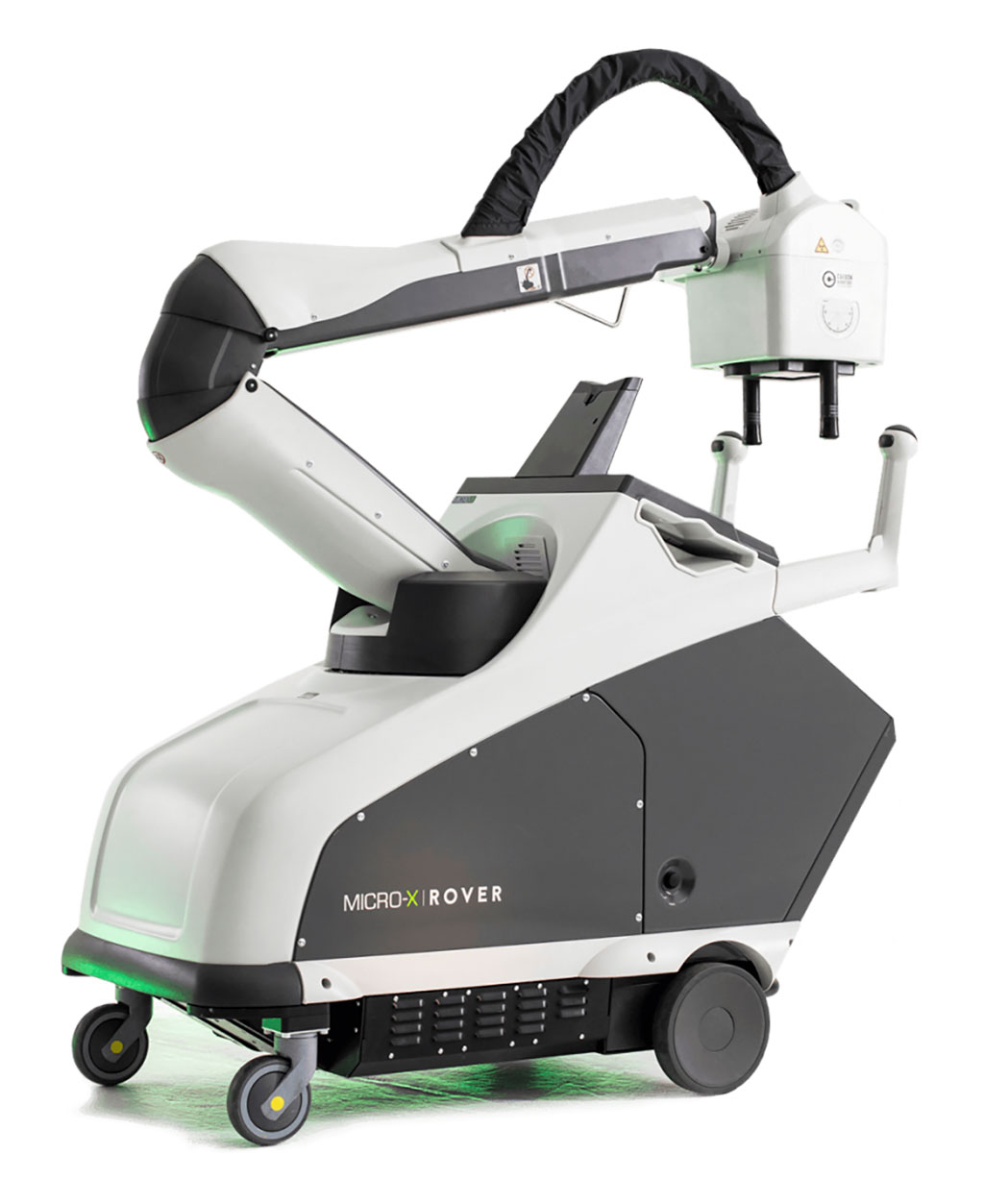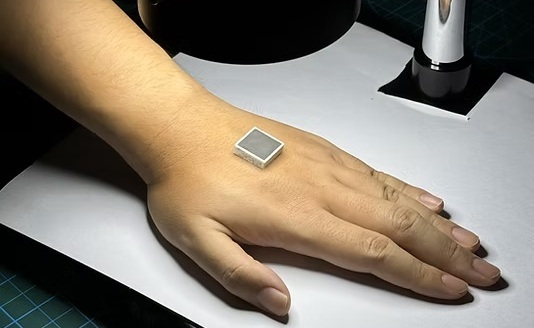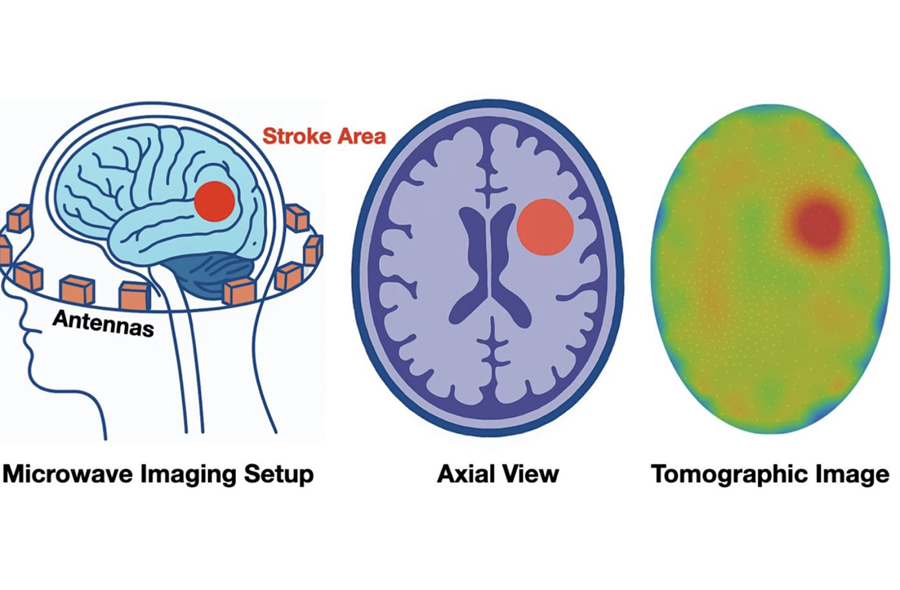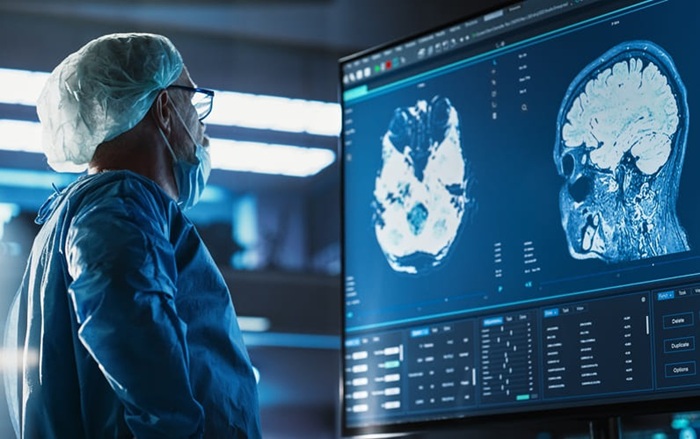Mobile X-Ray Technology Optimizes Field Imaging 
|
By MedImaging International staff writers Posted on 20 Jun 2021 |

Image: The Rover mobile X-ray system (Photo courtesy of Micro-X)
A news X-ray imaging device combines lightweight maneuverability with high precision imaging to deliver critical diagnostics in the toughest of environments.
The Micro-X (Tonsley, Australia) Rover mobile imaging device, developed under a contract from the Australian Department of Defence, was specifically designed to meet the challenges faced in military deployed hospitals and humanitarian aid. Rover offers full diagnostic imaging capability in a small package that weighs just 95 kg, despite being ruggedized and optimized for the high-intensity use associated with mass casualty situations. Precise and instantaneous electronic X-ray tube technology based on an array of miniature x-ray sources that can be electronically switched in sequence, producing a moving x-ray beam that utilizes no moving parts.
Utilizing Carbon nanotube (CNT) technology, the Rover is agile and flexible with key design features to make optimal positioning easier, including 75mm step upground clearance that allows for operation on uneven ground, battery operation with 10 hours endurance, and a swappable battery pack that can be replaced in under a minute. Hard shell reusable plastic packaging for military transportation, lifting handles, and a reinforced belly facilitate deployment in field hospitals. Rover using a digital flat panel detector (FPD), an imaging processing software system, and flexible image communication options.
“The Rover system was specifically designed for use in Australian Army deployments with support from the Australian Defence Force, filling a gap and improving healthcare for our military personnel in extremely challenging environments,” said Peter Rowland, managing director of Micro-X. “No other product offers such high performance in a light-weight package. The weight of most hospital-grade mobile x-ray machines makes them unsuitable, so prior to the Rover only small animal veterinary x-ray machines were light enough to be deployed by the military.”
Traditional x-ray tubes use a hot filament, like an old-fashioned light bulb, to generate the electron stream needed to make x-rays; but Micro-X’s technology applies voltage to an emitter made from CNT to generate the stream of electrons instead. It’s smaller, more energy efficient and longer lasting, like LED lights. Not only are the devices much lighter, they produce a beam that can be controlled instantly and precisely by simply adjusting the voltage.
Related Links:
Micro-X
The Micro-X (Tonsley, Australia) Rover mobile imaging device, developed under a contract from the Australian Department of Defence, was specifically designed to meet the challenges faced in military deployed hospitals and humanitarian aid. Rover offers full diagnostic imaging capability in a small package that weighs just 95 kg, despite being ruggedized and optimized for the high-intensity use associated with mass casualty situations. Precise and instantaneous electronic X-ray tube technology based on an array of miniature x-ray sources that can be electronically switched in sequence, producing a moving x-ray beam that utilizes no moving parts.
Utilizing Carbon nanotube (CNT) technology, the Rover is agile and flexible with key design features to make optimal positioning easier, including 75mm step upground clearance that allows for operation on uneven ground, battery operation with 10 hours endurance, and a swappable battery pack that can be replaced in under a minute. Hard shell reusable plastic packaging for military transportation, lifting handles, and a reinforced belly facilitate deployment in field hospitals. Rover using a digital flat panel detector (FPD), an imaging processing software system, and flexible image communication options.
“The Rover system was specifically designed for use in Australian Army deployments with support from the Australian Defence Force, filling a gap and improving healthcare for our military personnel in extremely challenging environments,” said Peter Rowland, managing director of Micro-X. “No other product offers such high performance in a light-weight package. The weight of most hospital-grade mobile x-ray machines makes them unsuitable, so prior to the Rover only small animal veterinary x-ray machines were light enough to be deployed by the military.”
Traditional x-ray tubes use a hot filament, like an old-fashioned light bulb, to generate the electron stream needed to make x-rays; but Micro-X’s technology applies voltage to an emitter made from CNT to generate the stream of electrons instead. It’s smaller, more energy efficient and longer lasting, like LED lights. Not only are the devices much lighter, they produce a beam that can be controlled instantly and precisely by simply adjusting the voltage.
Related Links:
Micro-X
Latest Radiography News
- Routine Mammograms Could Predict Future Cardiovascular Disease in Women
- AI Detects Early Signs of Aging from Chest X-Rays
- X-Ray Breakthrough Captures Three Image-Contrast Types in Single Shot
- AI Generates Future Knee X-Rays to Predict Osteoarthritis Progression Risk
- AI Algorithm Uses Mammograms to Accurately Predict Cardiovascular Risk in Women
- AI Hybrid Strategy Improves Mammogram Interpretation
- AI Technology Predicts Personalized Five-Year Risk of Developing Breast Cancer
- RSNA AI Challenge Models Can Independently Interpret Mammograms
- New Technique Combines X-Ray Imaging and Radar for Safer Cancer Diagnosis
- New AI Tool Helps Doctors Read Chest X‑Rays Better
- Wearable X-Ray Imaging Detecting Fabric to Provide On-The-Go Diagnostic Scanning
- AI Helps Radiologists Spot More Lesions in Mammograms
- AI Detects Fatty Liver Disease from Chest X-Rays
- AI Detects Hidden Heart Disease in Existing CT Chest Scans
- Ultra-Lightweight AI Model Runs Without GPU to Break Barriers in Lung Cancer Diagnosis
- AI Radiology Tool Identifies Life-Threatening Conditions in Milliseconds

Channels
MRI
view channel
Novel Imaging Approach to Improve Treatment for Spinal Cord Injuries
Vascular dysfunction in the spinal cord contributes to multiple neurological conditions, including traumatic injuries and degenerative cervical myelopathy, where reduced blood flow can lead to progressive... Read more
AI-Assisted Model Enhances MRI Heart Scans
A cardiac MRI can reveal critical information about the heart’s function and any abnormalities, but traditional scans take 30 to 90 minutes and often suffer from poor image quality due to patient movement.... Read more
AI Model Outperforms Doctors at Identifying Patients Most At-Risk of Cardiac Arrest
Hypertrophic cardiomyopathy is one of the most common inherited heart conditions and a leading cause of sudden cardiac death in young individuals and athletes. While many patients live normal lives, some... Read moreUltrasound
view channel
Wearable Ultrasound Imaging System to Enable Real-Time Disease Monitoring
Chronic conditions such as hypertension and heart failure require close monitoring, yet today’s ultrasound imaging is largely confined to hospitals and short, episodic scans. This reactive model limits... Read more
Ultrasound Technique Visualizes Deep Blood Vessels in 3D Without Contrast Agents
Producing clear 3D images of deep blood vessels has long been difficult without relying on contrast agents, CT scans, or MRI. Standard ultrasound typically provides only 2D cross-sections, limiting clinicians’... Read moreNuclear Medicine
view channel
PET Imaging of Inflammation Predicts Recovery and Guides Therapy After Heart Attack
Acute myocardial infarction can trigger lasting heart damage, yet clinicians still lack reliable tools to identify which patients will regain function and which may develop heart failure.... Read more
Radiotheranostic Approach Detects, Kills and Reprograms Aggressive Cancers
Aggressive cancers such as osteosarcoma and glioblastoma often resist standard therapies, thrive in hostile tumor environments, and recur despite surgery, radiation, or chemotherapy. These tumors also... Read more
New Imaging Solution Improves Survival for Patients with Recurring Prostate Cancer
Detecting recurrent prostate cancer remains one of the most difficult challenges in oncology, as standard imaging methods such as bone scans and CT scans often fail to accurately locate small or early-stage tumors.... Read moreGeneral/Advanced Imaging
view channel
AI-Based Tool Accelerates Detection of Kidney Cancer
Diagnosing kidney cancer depends on computed tomography scans, often using contrast agents to reveal abnormalities in kidney structure. Tumors are not always searched for deliberately, as many scans are... Read more
New Algorithm Dramatically Speeds Up Stroke Detection Scans
When patients arrive at emergency rooms with stroke symptoms, clinicians must rapidly determine whether the cause is a blood clot or a brain bleed, as treatment decisions depend on this distinction.... Read moreImaging IT
view channel
New Google Cloud Medical Imaging Suite Makes Imaging Healthcare Data More Accessible
Medical imaging is a critical tool used to diagnose patients, and there are billions of medical images scanned globally each year. Imaging data accounts for about 90% of all healthcare data1 and, until... Read more
Global AI in Medical Diagnostics Market to Be Driven by Demand for Image Recognition in Radiology
The global artificial intelligence (AI) in medical diagnostics market is expanding with early disease detection being one of its key applications and image recognition becoming a compelling consumer proposition... Read moreIndustry News
view channel
GE HealthCare and NVIDIA Collaboration to Reimagine Diagnostic Imaging
GE HealthCare (Chicago, IL, USA) has entered into a collaboration with NVIDIA (Santa Clara, CA, USA), expanding the existing relationship between the two companies to focus on pioneering innovation in... Read more
Patient-Specific 3D-Printed Phantoms Transform CT Imaging
New research has highlighted how anatomically precise, patient-specific 3D-printed phantoms are proving to be scalable, cost-effective, and efficient tools in the development of new CT scan algorithms... Read more
Siemens and Sectra Collaborate on Enhancing Radiology Workflows
Siemens Healthineers (Forchheim, Germany) and Sectra (Linköping, Sweden) have entered into a collaboration aimed at enhancing radiologists' diagnostic capabilities and, in turn, improving patient care... Read more



















